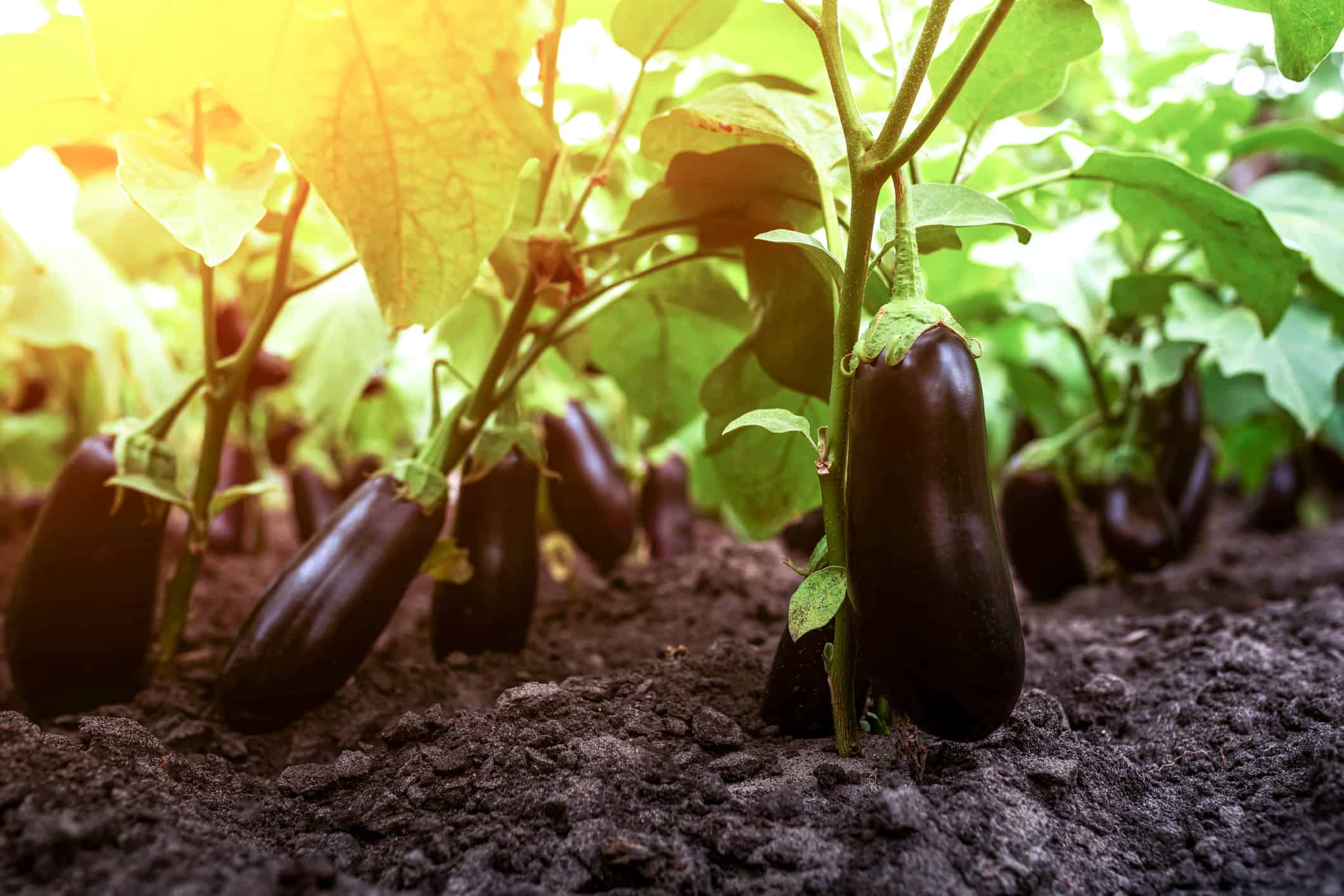
- Start seeds indoors: Sow eggplant seeds indoors about eight weeks before the last frost date in your area. Soak the seeds overnight in water to speed up germination. Then sow them ¼ inch deep in pots or trays filled with a loose and fine growing medium, such as vermiculite or peat moss. Keep the soil moist but not soggy and place the pots or trays in a warm and sunny spot or under artificial lights. The ideal temperature for germination is between 24°C and 32°C. The seeds should sprout within one to two weeks.
- Transplant seedlings outdoors: When the seedlings have four to six true leaves and the weather is warm enough, they are ready to be transplanted outdoors. Choose a sunny location that gets at least six to eight hours of direct sunlight per day. Prepare the soil by adding organic matter, such as compost or well-rotted manure, and a balanced fertilizer, such as 5-10-5 or 10-10-10. The ideal soil pH for eggplant is between 5.8 and 6.5. Dig holes about 24 to 30 inches apart in rows that are three feet apart. Carefully remove the seedlings from their pots or trays without disturbing their roots and place them in the holes. Fill the holes with soil and water well.
- Provide water and mulch: Eggplant needs regular watering to grow well and produce quality fruits. Water the plants deeply once or twice a week, depending on the weather and soil conditions. Avoid wetting the leaves to prevent fungal diseases. To conserve soil moisture and prevent weeds, apply a layer of organic mulch, such as straw or grass clippings, around the plants. Keep the mulch away from the stems to avoid rotting.
- Fertilize and prune: Eggplant is a heavy feeder that needs additional nutrients throughout the growing season. Apply a side dressing of nitrogen-rich fertilizer, such as ammonium sulfate or urea, every three to four weeks after transplanting. Alternatively, you can use organic fertilizers, such as fish emulsion or compost tea. Prune the plants by removing any suckers that grow from the base or along the main stem. This will help direct more energy to the fruits and improve air circulation.
- Control pests and diseases: Eggplants can be attacked by various pests and diseases that can reduce their yield and quality. Some of the common pests include aphids, spider mites, whiteflies, flea beetles, cutworms, and hornworms. Some of the common diseases include anthracnose, bacterial wilt, early blight, fusarium wilt, and verticillium wilt. To prevent or control these problems, use resistant varieties if available; rotate crops with non-nightshade plants; remove any infected plants or fruits; use insecticidal soap or neem oil for mild infestations; use biological control agents such as ladybugs or parasitic wasps for severe infestations; use fungicides for fungal diseases; use drip irrigation instead of overhead watering; avoid planting eggplant in wet or poorly drained soils; practice good sanitation by removing any plant debris.
- Harvest and store: Eggplant can be harvested when the fruits are glossy and firm, but before they turn dull and hard. The size and color of the fruits depend on the variety, but generally they are ready to pick when they are about six to eight inches long and dark purple in color. To harvest, use a sharp knife or scissors to cut the fruits from the plants, leaving about an inch of stem attached. Handle the fruits carefully to avoid bruising or scratching them.


















